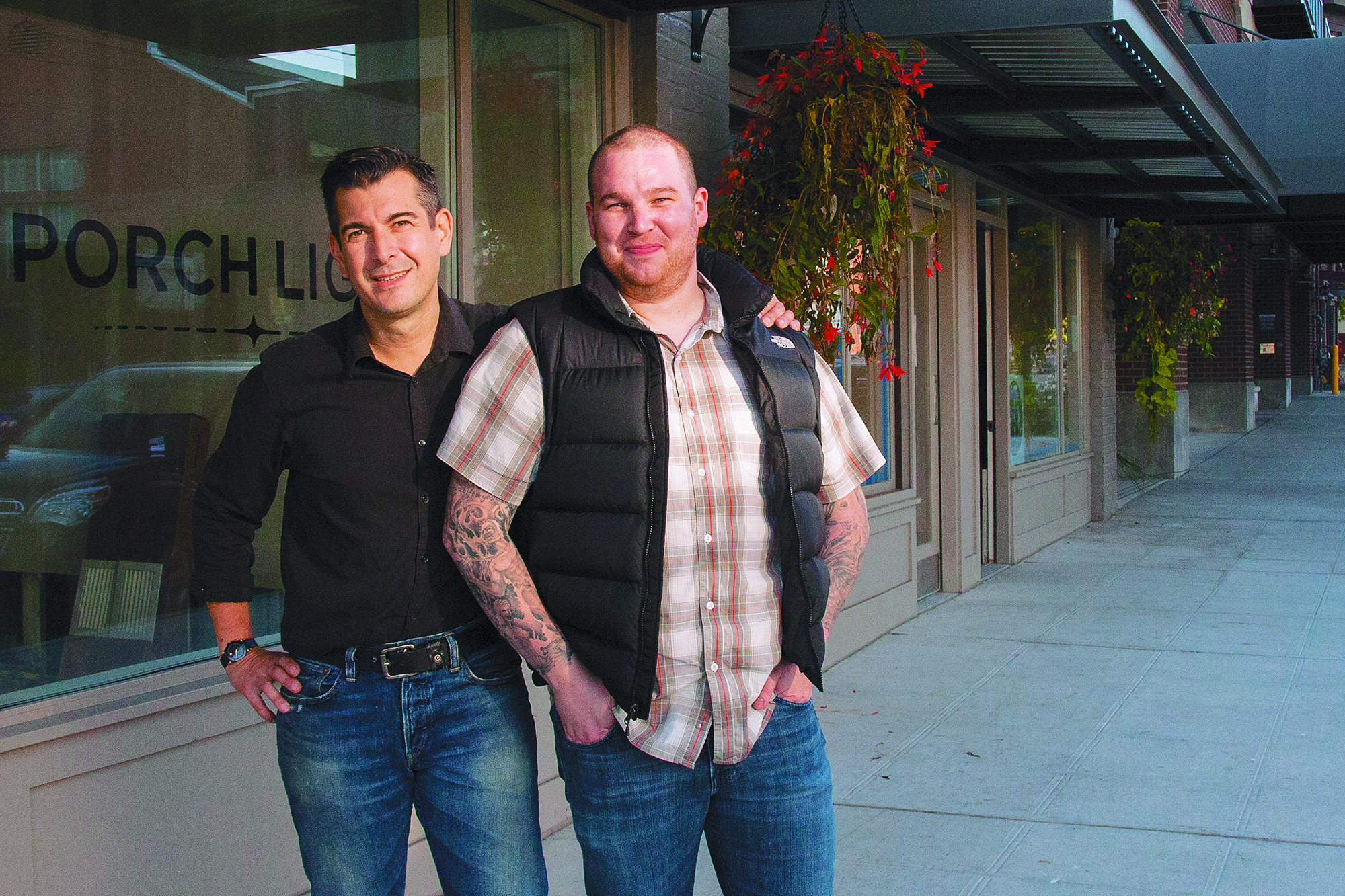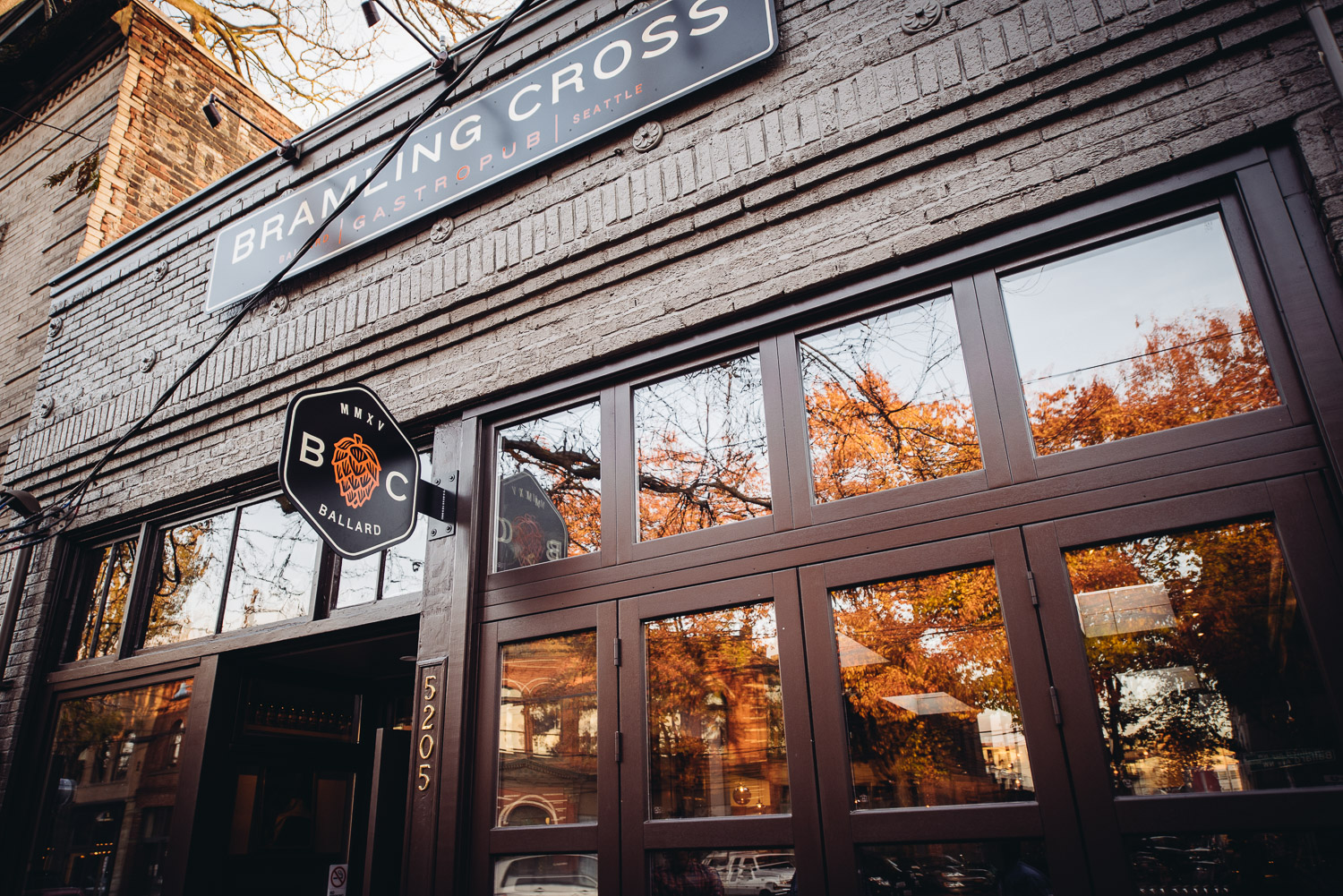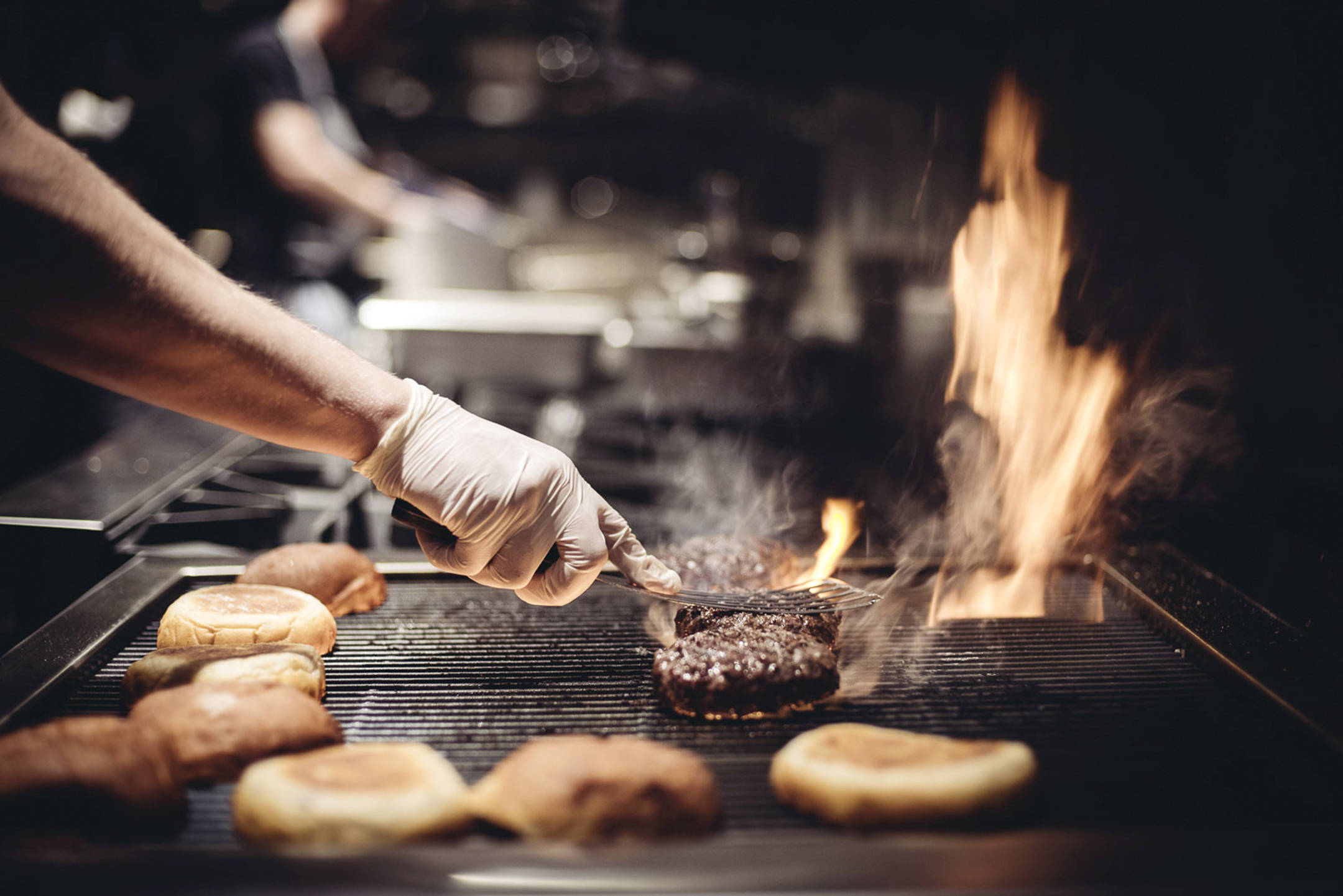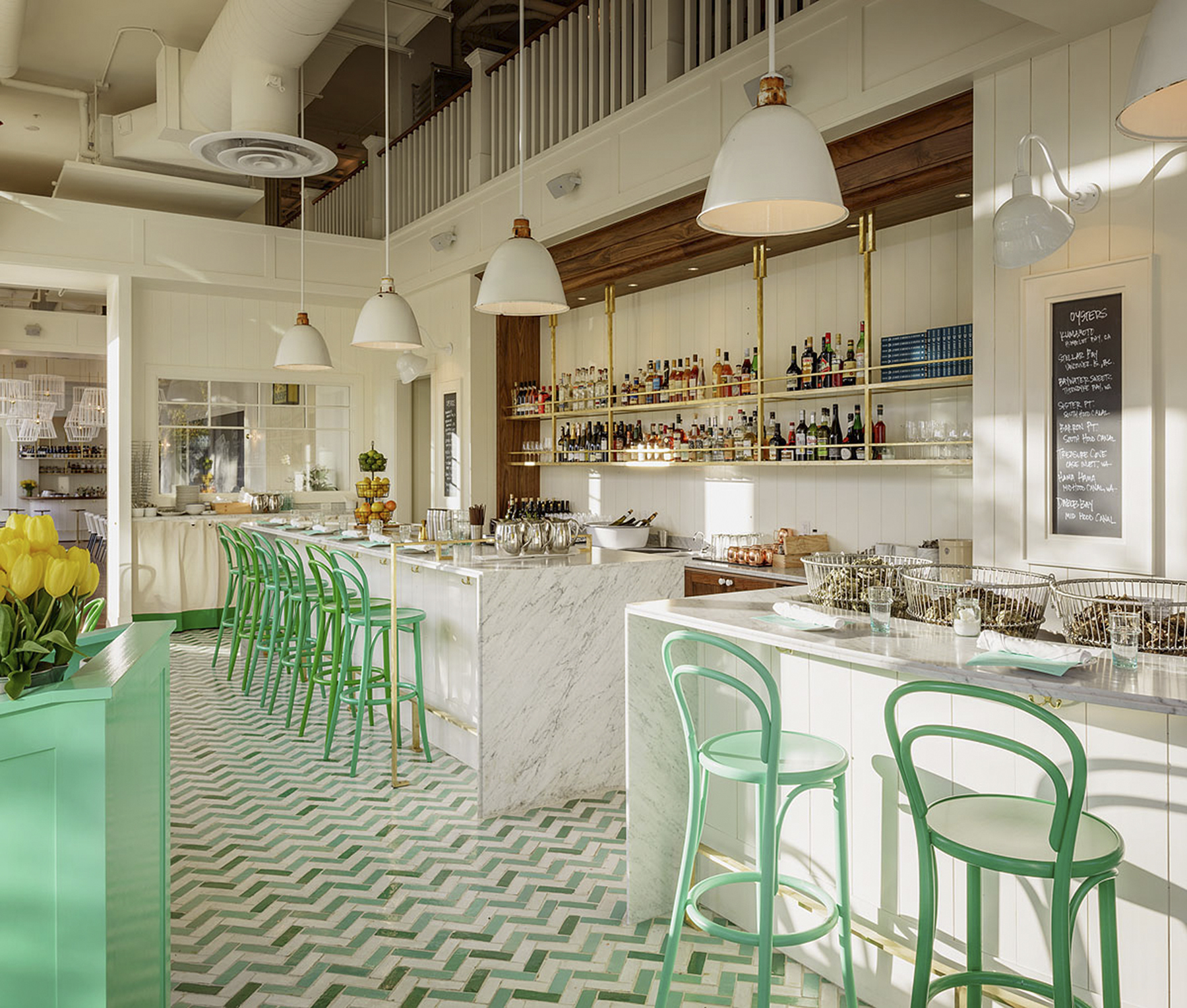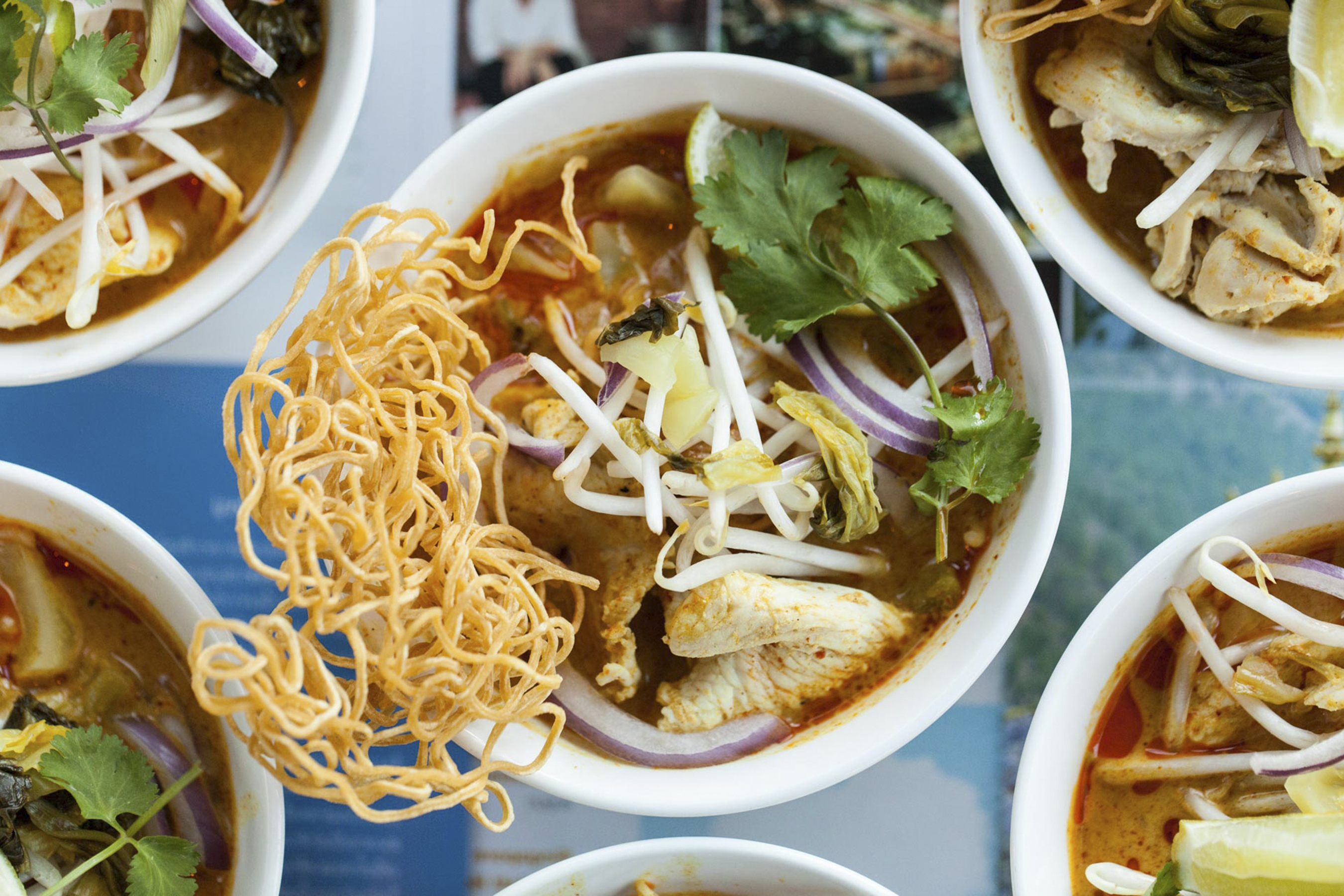Chris Cvetkovich and Ben Godwin. Photo by Kyu Han
I’m both fascinated and jealous when I phone Chris Cvetkovich about his soon-to-open Capitol Hill restaurant, Nue. Pronounced “new,” the name is inspired by a Japanese mythical creature, and also means “naked” in French, which signifies its simplicity, its lack of bells and whistles. And Nue is, well, new—as in no one else is doing this in Seattle. What is it, exactly? In two words: street food.
Just a week before Cvetkovich shared his plans with me, I’d had a conversation with a good friend that went something like this:
Me: If we were ever crazy enough to open a restaurant, what do you think it would be like?
Friend: Well, I think because we both traveled so much, it would be cool to feature our favorite dishes from all over the world.
Me: Yeah, totally. Like even street food. Do you think that’s too broad, though?
Friend: I don’t know, but we’re not doing it anyway.
Me: Of course not.
Cue Cvetkovich. A chef? Nope. He’s been an environmental artist for video games at Xbox and Wii for a decade, but also cooks with the Seattle modernist food geeks like Scott Heimendinger, the recent subject of a Seattle Weekly story (“Seattle Food Geek Builds Ultimate Sous Vide Machine,” Sept. 3), and has spent time with Nathan Myhrvold at the Modernist Cuisine Lab here. He’s even partnered with The Culinary Institute of America to use his 3-D food animations in their curriculum—something he’s been making at his own company for years.
“I was working all day and enjoyed it, but every day when I turned off the computer, I went to the kitchen and cooked,” he says. “So I eased into the food world by doing animations of food. I worked with Cesar Vega doing an animation for his ‘Knowledge Map of Ice Cream’ in the Modernist Cuisine Lab.
But from foodie geek to restaurateur? I ask Cvetkovich about that leap, and the concept of Nue, which is based on his travels and the street food he ate during them.
“The research has been for the last 10 years. Traveling was always a part of my life. I’d always gone the hard route. Like I wanted to go to Borneo, but to the Indonesian side, rather than the Malaysian part. I searched all over, but couldn’t find anyone to take me there. I finally resorted to Couchsurfing [a travel community website] and found a guide. I thought, ‘I’m going to get jacked in the jungle,’ but I went bushwhacking with this dude, and it turns out he was the one who took the Lonely Planet guys into the jungle in Malaysia.”
But it was his most recent four-month trip throughout Europe, which ended in January, that solidified his desire to open a restaurant. “I’d been talking about it for years, but it was really on that trip, where about midway through I was enjoying so much being immersed in that culture, that the thought of coming home and sitting behind a computer kind of killed me. I knew that I can’t travel all the time, because I need money. But with a restaurant, I can always be somewhere new in the kitchen.”
Street food, he says, was a natural fit. He’d always been surprised at how you could get such incredible-tasting bites, whether in plastic bowls or plates or on a stick, from street stalls, but could never find them on restaurant menus. “You see the same 10 items in every Vietnamese restaurant.”
On this we are simpatico. I recount for him some of the things I ate while living in Taiwan for a year that I can never find anywhere else: night-market delicacies like an incredible squid fried with Chinese basil and Chinese five-spice or a perfectly simple whole fish steamed with ginger, chilies, and scallions.
He’s eager to hear this because, he says, he wants input from other travelers for his menu. He and his chef—Ben Godwin, formerly of The Fat Duck in London and the Salish Lodge in Snoqualmie—plan to have it finalized by the middle of this month. They just spent a weekend working through a number of the dishes, which will mostly be small plates. I got a sneak preview, which included, among other things, bifanas, a Lisbon-style pork sandwich with paprika, and mititei from Romania: lamb and chuck on a stick, flavored with cumin, caraway, smoky paprika, and garlic, grilled over charcoal and served with spicy mustard and pickled onion.
“The food in Portugal was amazing. They once owned half the world, but they integrated the foods of the places they conquered, which is not the case of the UK. We’re going to do a lot of Moroccan stuff too, because the food is so different from anywhere else, a lot of grilled meats and vegetables. And Vietnam—the little steamed rice cakes with shrimp on the inside.”
Binoodles. Photo by Kyu Han
Listening to Cvetkovich talk is teasing my taste buds, flooding me with memories, and making me pine to open my own street-food restaurant all at once. But he’s quick to point out that his “street food” won’t necessarily be exact replicas of things he’s eaten. Sometimes it will, but sometimes he’ll riff on a dish. Take, for instance, binoodles (a made-up name), which Cvetkovich masterminded when he was hosting a Chinese visitor via couchsurfing. “She introduced me to this pickled mustard seed with olives from Viet Wah grocery. It’s mellow but not astringent.” To that he adds fermented tofu, chili, peanuts and tomato, which he serves over cold Chinese wheat noodles. Or they might take the flavor profile of, say, an Indonesian curry but “turn it into a sandwich,” says Godwin, who met Cvetkovich at the Modernist Cuisine Lab. Godwin often came to do special dinners there, and they became fast friends.
While Godwin’s travels pale in comparison to Cvetkovich’s, he’s got the same modernist sensibility and the desire to work creatively. And while their food is geared to be simple and approachable, the duo will have no qualms about employing a modernist trick or two if they think it will make something taste better. “It’s street food in its simplicity and flavors, but the techniques can change,” says Cvetkovich.
Compressed Fruit. Photo by Kyu Han
For instance, on a recent trip through Malaysia, he was inspired by “street vendors who sell nothing but beautifully cut and refreshingly chilled fruit.” They’ll make “compressed fruit,” putting watermelon and pineapple in a chamber vac with liquid and bringing the atmosphere down to zero. On “returning-to-Earth” pressure, the air that was once inside the fruit is replaced with the liquid surrounding it, changing both the flavor and texture. For the watermelon, they “did vodka and lime juice (think of a grown-up Jell-O shot), and the pineapple was done with Thai chili, tequila, and lemongrass. They are served with salsa en polvo (Mexican fruit salt) for dipping. I know it sounds all high-tech and fancy, but honestly that’s just in the description. This is one of the simplest foods there is,” contends Cvetkovich. Another nod to modernist fare: a liquid-nitrogen ice-cream machine.
But what about British street food? I ask Godwin. “Well, some kind of twist on fish and chips and meat pie, even if it doesn’t go on the menu and it’s just me eating it.” And what’s the one thing from your travels that you need to have on the menu? “Soup dumplings from Shanghai. When you see them you can’t say no.”
He’s right about that. To my mind, street food is the epitome of comfort food, delicious and uncomplicated, something you can always count on to cheer you up—and fill you up. And in a global society, it makes more sense than ever that our comfort food go-tos should extend to all parts of the world. Sure, fried chicken and mashed potatoes will always be beloved, but why not South African bunny chow (meat curry served in a bread bowl) or shandong bing (a Chinese crepe)?
And while small plates will be the focus at Nue, Godwin is also planning a few staple dishes that will be larger and served family-style. “If I’m having that casual experience, sharing things with friends, I love, like, a whole roasted leg of lamb placed in the middle of the table. You put it down on the table and everyone digs in.”
Again, memories of eating in Taiwan with my friends around a big table come rushing in, the lazy susan spinning left and right—quickly at first, then more slowly as our bellies fill and the conversation finally slows. It was such an intimate and engaging way to eat. And that’s exactly what these guys want you to experience at Nue.
“I want it to be a place where you’re comfortable hanging out. So our drink menu will have four-ounce wine pours for a cheap price, like you can get in Europe. This way people can feel OK about having wine at lunch and pairing it with a two-plate combo,” says Cvetkovich. Or, via a walk-up window, you can eat in true street-food style. For updates on the November opening, check out nueseattle.com.
